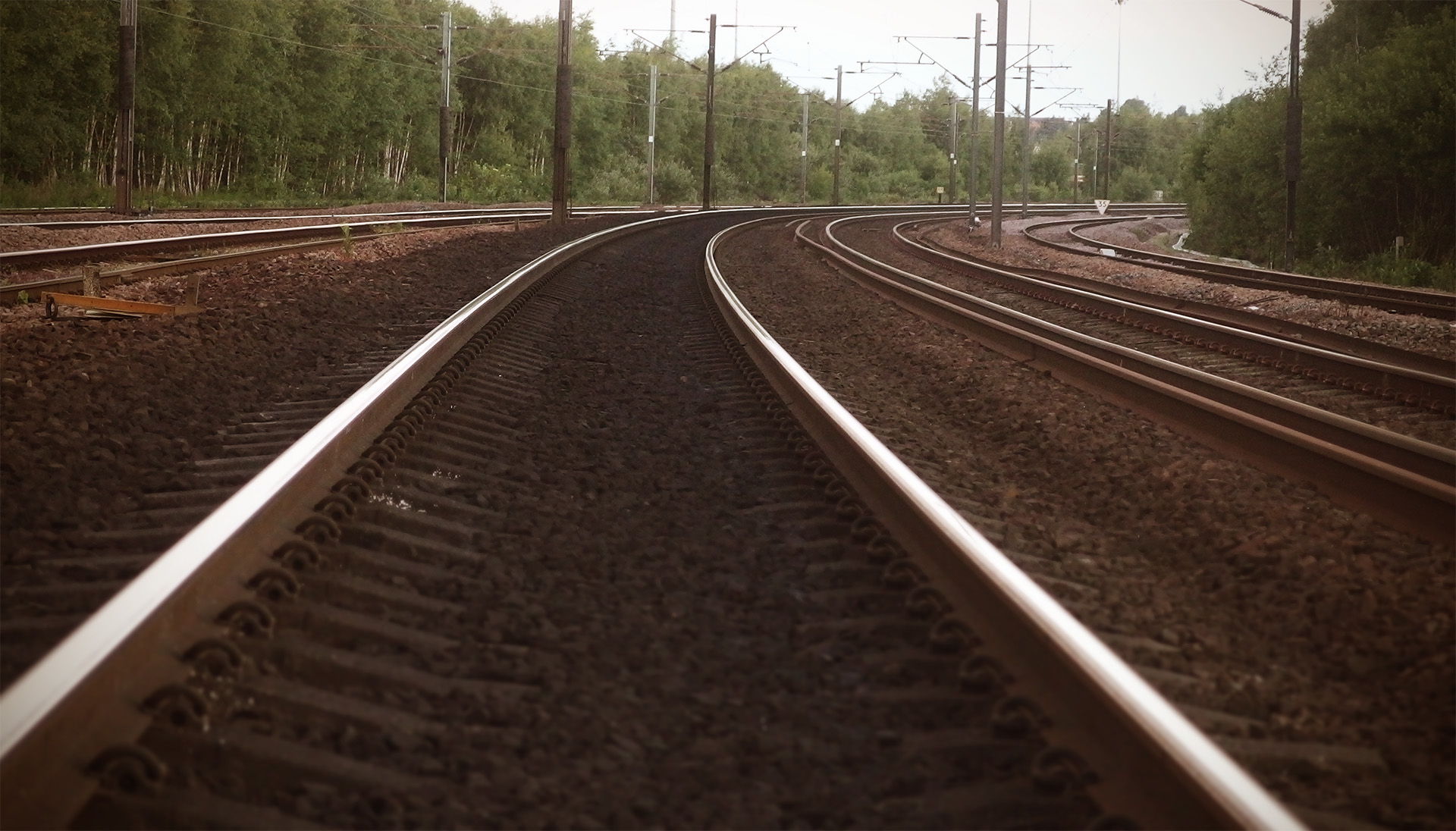Warning!
This website is under construction. If you see anything moving, put your hard hat on.
Ever looked out the window of your train and wondered why one rail is higher than the other?
This little explainer piece describes why railway engineers apply cant (apply what?) through curves and discusses why this isn’t the right thing to do on heritage railways...
This article originally appeared in Issue 77 (Autumn 2017) of Relay: The Magazine of the Wensleydale Railway Association (Trust) Ltd.
As track-patroller between Wensley and Redmire, I get the monthly privilege of a very scenic plod. I also get to walk over probably the most rollercoaster-esque section of the railway – the curve at Preston under Scar coincides with the summit of the line, and the drop down towards Redmire is quite impressive.
However, this curvaceous alignment causes problems.
One rail is elevated above the other, or “canted”, for the original, faster, line speed. Today, trains roll through at 25mph or less, and the low rail (and everything below it) consequently gets quite a hammering, requiring more maintenance.
This is not a problem unique to the Wensleydale Railway. All heritage railways must deal with the challenge of “overcanting” because of historic operation at higher speeds.
So, what can be done about it?
A brief explanation of track cant
Perhaps it might be useful to start with a little background on what cant is and why it is applied. Permit me to get techie for a moment...
Cant, crosslevel or superelevation is the amount by which one rail of a curved track is raised above the other rail, measured over the rail centres.
Ellis' British Railway Engineering Encyclopaedia, Third Edition
When a train goes around a curve it exerts an outwards force on the tracks – tilting the track to be perpendicular to this force gives us “equilibrium cant” (Eq). Cant is a function of speed, radius and gauge – tighter curves or faster trains mean more cant.
For passenger comfort and to allow for slower trains, the “applied cant” (E) is always lower than the equilibrium cant. The resulting difference between these two values is called “cant deficiency” (D) – thus Eq=E+D.
Still following?
Applying cant
Once trains travelled quickly enough to justify applying cant, it was usually eyed-in by the site engineer. Permanent way engineers eventually came up with the “two thirds” rule – that the ratio of applied cant to cant deficiency should be 2:3, or E=⅔D.
Today, curve design involves a little more science than this and the “two thirds” rule has been wholly debunked... Engineers now understand that with modern track materials, maximising cant deficiency (i.e. less cant) is a good thing. Design standards limit us to D=90mm for jointed track.
At Preston curve, the radius is 1650m – at 25mph this gives Eq=12mm. However, the existing cant is currently more than 80mm!
This means a huge amount of extra force goes through the low rail, and when some of our rails are pushing 100 years old, this can result in life-shortening damage. Rails wear and fatigue, baseplates crack, timber sleepers break, ballast gets broken up and slurry spots appear.
Despite this, some still believe that “you need a bit of cant” – this is not true! The tightest radius on the Wensleydale is 240m up at Bedale, and even traversing this curve at 25mph would not require any cant (in this case D=80mm). Considering that trains either trundle through or stop at Bedale station, zero cant is a necessity!
Furthermore, “a little cant” is difficult to maintain on the mainline let alone for a volunteer workforce: manually maintaining the track is hard work and it would be very difficult to prevent “twists” (rapid changes in cant) forming in the track, risking train derailment. Ultimately, zero cant is the easiest state to maintain.
Removing cant
So... we’ve established that we should avoid cant on heritage railways. How does this get corrected in practice?
On the mainline railway, enough ballast would be dropped to lift the low rail up to get rid of the cant – this is obviously not feasible on the Wensleydale Railway.
Instead, the curves with the most obvious side-effects of overcanting should be locally lifted and packed, taking care not to introduce any track twist. A good guide is to lift out “an inch a panel”, in other words, 25-30mm of cant can be removed over the length of a standard 60ft rail.
Where any major works are being undertaken, then the infrastructure team should ensure that no cant is applied.
Eventually, this should result in the removal of all cant throughout the line, and a cheaper/easier railway to maintain.
Next time you are sitting behind Joem, listening to the pleasing puff and admiring the beautiful Wensleydale scenery, pay a little attention when the train leans over through a curve.
Gareth is an engineer and writer, specialising in railway systems. As well as roles in design consultancy, he has written for several technical journals and for the railway press. He leads the York section of his professional institution, as well as being a lecturer in track systems at a newly-opened national engineering college.

